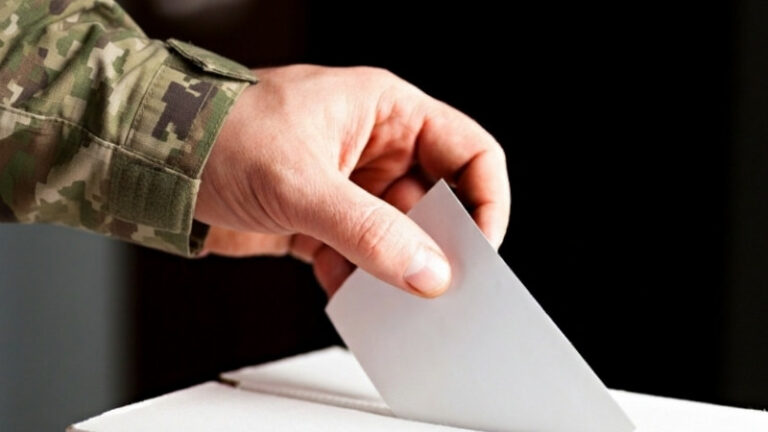Does the SCRA Apply to Bankruptcy Proceedings: A Guide
Working in the Armed Forces is an honor, but it’s common for service members to move around often. The frequent relocation and life’s other circumstances make it challenging to manage one’s finances. Unfortunately, some military members are forced to declare bankruptcy.
However, there are laws like the Servicemembers Civil Relief Act (SCRA) in place that can help active duty members navigate this arduous journey. We’ll zero in on what the SCRA can do for those going through bankruptcy adversary proceedings.
Contents
- 1 What Does the Servicemembers Civil Relief Act Say About Bankruptcy?
- 2 Key Protections Offered by SCRA in Bankruptcy
- 3 How to Request SCRA Protections at a Bankruptcy Court?
- 4 Conclusion
- 5 FAQs
- 5.1 Do you have to be on active duty for SCRA protections?
- 5.2 Does SCRA apply to reservists?
- 5.3 What are the requirements for SCRA notice?
- 5.4 When must a creditor comply with SCRA?
- 5.5 How does the SCRA’s interest rate cap affect debts in bankruptcy?
- 5.6 Can a servicemember delay bankruptcy proceedings under the SCRA?
What Does the Servicemembers Civil Relief Act Say About Bankruptcy?

According to 50 U.S. Code app. §§ 521, 522, and 524, the Servicemembers Civil Relief Act applies to generally any proceeding or action in any court. This means that those having to go to a bankruptcy court clerk’s office can maximize their active military status for added legal defense.
In simple terms, military members tasked to face federal rules of bankruptcy can use SCRA protections to focus on military service. They can bypass select rules of bankruptcy procedure, so they won’t be distracted by their military duties.
Key Protections Offered by SCRA in Bankruptcy
The SCRA offers several protections when an active-duty service member faces bankruptcy. First, the SCRA provides default judgment protections, which means that the service member can be spared from unfavorable outcomes because they cannot attend judicial and administrative proceedings.
Second, the SCRA allows military personnel to delay civil proceedings for at least 90 days. Like in civil court proceedings, the SCRA permits protected members to reschedule proceedings so they can focus on serving the nation. The court can choose to extend this delay if it sees fit. However, this occurs on a case-to-case basis.
The SCRA also provides an interest rate limit for pre-active duty service debt. Those rendering active duty service can lower their debt liabilities to 6% interest, making it more manageable to pay. It should be highlighted that this protection applies to debt before entering active duty service only. Recent debt or that acquired when serving the Armed Forces won’t be included in the interest rate reduction.
How to Request SCRA Protections at a Bankruptcy Court?
So, what can you do when you’ve received an advisory committee note? Before you complete bankruptcy procedural forms, you must proactively request SCRA protections. Unfortunately, military service won’t automatically grant you protections from civil procedure. You need to submit a request asking for a specific SCRA protection to be honored.
First, you need to present proof of active military service. You can present military orders or a letter from your commanding officer stating that you’re rendering military service and are eligible for SCRA protections. Alternatively, you can use services like SCRACVS to confirm your active military status as quickly as one business day.
The next step is to prepare a written notice stating the SCRA protection you’re requesting concerning the bankruptcy proceedings. If you’re asking to delay the proceedings, you must state that in your notice. If you need to address various institutions, you must prepare individual requests accordingly.
Once you’ve sent the request, you must wait for the response from the institution you’re requesting. The request must be acknowledged because their confirmation is evidence if anything happens. This can be used as a defense if the institution doesn’t honor your SCRA rights.
Conclusion
The Servicemembers Civil Relief Act can be advantageous when facing bankruptcy proceedings. However, you need evidence of your active military status to activate these privileges. SCRACVS can help you prove that you’re eligible to delay bankruptcy proceedings and more. Check the service member’s active duty status by clicking here.
FAQs
Do you have to be on active duty for SCRA protections?
Most SCRA protections require covered individuals to render military service. However, certain protections continuously apply for a certain period after one’s active duty service has ended.
Does SCRA apply to reservists?
The SCRA only applies to reservists called to active duty besides basic training. If you’re a reservist but are not actively serving the country through military service, you’re not eligible for SCRA protections.
What are the requirements for SCRA notice?
The SCRA notice should explicitly mention which protection you’re requesting. It should also mention your active duty service period so you know when SCRA protections apply to you.
When must a creditor comply with SCRA?
It would depend on the SCRA protection that’s been requested. Select protections are applicable even after the service member leaves active duty.
How does the SCRA’s interest rate cap affect debts in bankruptcy?
The six percent interest rate cap allows service members to manage their finances better. A lowered interest rate means they would pay less than they would have otherwise.
Can a servicemember delay bankruptcy proceedings under the SCRA?
Yes, the SCRA permits service members to delay bankruptcy court proceedings for at least 90 days, like in civil court cases. However, this protection isn’t automatic, so you’d have to request this delay so it can be officially active.






